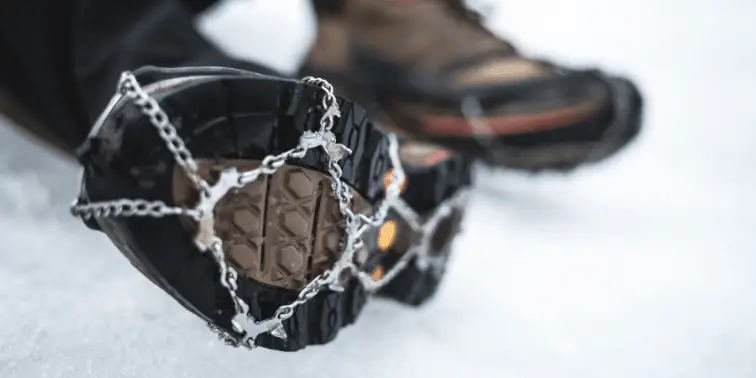So you’ve decided you need to get a pair of hiking boots, but you’re not sure what hiking boots you should get. Whether you’re new to hiking or have been hiking for awhile, it can be overwhelming trying to pick out the correct hiking boots.
This is because hiking boots come in all shapes and sizes and are made for very different purposes. If you’re a casual hiker it can be hard to know where to even start.
To pick out the proper hiking boots to fit your needs, first assess what your needs actually are. If you’re just walking your local trail that is short and well maintained then you don’t actually need hiking boots at all. A comfortable trail running shoe will work great. However, if you’re hiking steep elevations, rocky terrain and going off-trail then a hiking boot is what you need.
In this article we’re going to help match you up with the style of hiking boot that is going to fit your needs.
Do You Even Need Hiking Boots?
There is a common misconception that if you’re going to go walk in the woods then you should wear hiking boots. Well, that’s not necessarily the case.
Hiking Boots are very rugged, stiff and somewhat bulky. They are meant to protect your feet against harsh terrain and environment. They are built to take on rocks, mud, snow and cold. The large majority of hiking boots are water proof or at the very least water repellent.
However, everything isn’t all peaches and cream with hiking boots. They’re heavy, can make your feet hot (especially if they are waterproof) and compared to a trail running shoe or even a tennis shoe, a little (or a lot) uncomfortable.
But, if you’re just doing short, casual hikes on a well-maintained trail, then a hiking boot is going to be way more than you need. If that’s the case then you may want to look a trail running shoe. A trail running shoe is going to give you added traction and protection on the trail, but isn’t going to be as bulky or cumbersome as a hiking boot.
What to Look For When Deciding on a Hiking Boot
Cut
Hiking boots come in three different cuts, low, mid and high.
Low Cut – These boots fit below the ankle like a tennis shoe would. A lot of trail running shoes fall into this category. With the ankle exposed, these shoes offer less stability, but are more comfortable for easier terrain. Low cut boots are typically cooler, because less shoe traps less heat. Less material also leads to a lighter shoe, which will talk more on in a minute.
Mid Cut – As you would expect this falls in between low and high in terms of stability and comfort. They can be a great compromise if you want a boot that can give you more stability for tougher trails, but if don’t quite need a full boot.
High Cut – This is where most true hiking boots are going to fall. High cut boots offer maximum stability and protection from the trail. This is the boot you want for challenging terrain including off-trail hiking.
Weight
Hiking boots are more than likely going to be the heaviest pair of shoes you have in your closet. Hiking boots are built to be tough and durable and that is going to come with added weight. The difference in a few ounces can become noticeable over the course of long hikes, especially if you’re also carrying quite of bit of gear.
The goal should be to get the level of protection (including waterproofing?) you want at the lightest weight possible.
Waterproof
Of course I want my boots waterproof! Right? Well, you need to ask yourself if you really need waterproofing, because there are some drawbacks to having waterproof boots.

First, how exactly are boots made to be waterproof. While it can vary from boot to boot, waterproofing commonly involves an added layer of Gore-Tex that is sewn in as an extra layer in the upper of your boot. This is usually combined with an added layer of water resistance like Durable Water Repellent (DWR) or a waxy substance such as Nikwax that can be applied to the outer upper and tongue area of your boot.
If you’re going to be hiking a lot in snow or if you where you commonly hike consists of streams to cross, marshy wet areas or you are a rain or shine hiker, then yes, waterproof is absolutely something you want to strongly consider.
However, water proofing does have some downsides. Keeping all that water out of your boot also means you’re going to be keeping a lot of that water, aka sweat, inside your boot. Wet, sweaty feet and long hikes are not a good combination.
So, you need to really evaluate what kind of hiking you plan to be doing. Most waterproof boots have enough moisture releasing technology to keep your feet dry in cool and cold climates, but may struggle on a hot and dry hike to keep your feet dry.
If you are going out in good weather and sticking primarily to dry land, water proofing might be an unnecessary, and potentially unhelpful, feature.
Lastly, this is all not to mention the fact that you’re also going to pay a bit extra for a waterproof boot as well. Expect to pay around an extra $25 for a waterproof boot.
Arch Support
Just like a running shoe, hiking boots are made with different levels of arch support. Picking a boot that meets the needs of your foot is critical in respect to how your feet are going to hold up long term. Some boots are designed for high arches, some for flat feet and everything in between.
If you’re not sure what kind of boot you need for your foot, take the time to see a podiatrist. While seeing a podiatrist to help you pick out a boot may sound extreme, it is definitely better than having to see a podiatrist to fix what a poor fitting boot has done to your foot after the fact.
Gusseted Tongue
A what tongue? This may sound intimidating, but all a gusseted tongue is is a tongue (the part right under the shoelaces) that is connected to the upper. This keeps all the rocks, twigs, dirt and everything else from the trail from sneaking down into your boots.

Crampon Compatibility
Crampons are hiking boot accessories that can be attached to add added grip to snow and ice. Different styles of hiking boot have specific crampons that they are best suited for. If you think a crampon is something that you may end up wanting in the future, check to see what is going to work best with your boot.
How a Hiking Boot Should Fit
It cannot be overstated enough that a proper fitting hiking boot is critical. A hiking boot should fit snug, but not tight. This is true for all aspects of the boot from heel, through the mid foot and in the toe box. This is a shoe whose sole purpose is to cover a lot of miles, more often than not on changing, uneven and unforgiving terrain.
A boot that is too loose or too tight can lead to anything from blisters and calluses to plantar fasciitis and bone spurs. Now imagine yourself with foot issues from an improper fitting hiking boot and you’re 8 miles away from civilization. Not a situation you want to find yourself in.
Here are some things to keep in mind when you’re trying on hiking boots.
Pro Tip: When buying hiking boots online, make sure to check the return/exchange policy. Having a 30 day (or longer) return policy is common and will allow you to test out the boots once you get them. Try them on, go through our checklist, give them a walk about and make sure they’re a good fit.
Wear the socks you’re going to wear when wearing the boots. (Our favorite hiking socks) Once you say it out loud, this seems fairly obvious but it’s easy to overlook. A good hiking sock is going to be a little thicker than an average sport or dress sock. That extra bulk is going to make the fit a bit tighter and should be taken into account when trying out boots.
If you’re toes feel cramped in the toe box, find a different pair of boots. Yes, a hiking boot will “break in” over the first couple weeks but a poor fitting boot is not likely to magically turn into a good fitting boot.
The number one cause of blackened toes is your toes hitting the front of your boot while going downhill. While you don’t want the boot to feel loose, make sure you have room in your toebox to be able to wiggle your toes freely.
Finally, a loose heel is one of the most common boot fit issues. When trying your boots on for the first time, slide your foot forward in the shoe before you lace them up. You should be able to fit a finger between your heel and the back of your foot. If not, try a size up or down respectively. The heel should fit snug.
Once you tie the laces tight, if your heel is not snug in place you have two options. One, try a different boot. Two, if every other part of the boot fits nicely, try a thicker sock or a different footbed that can help you fill up more space inside the shoe, hence removing the ability of the heel to slide around.
Final Thoughts
Finding the right hiking boot is the most important gear decision that you’re going to make. Decide first on what your needs are out of a piece of hiking footwear.
Do you need a boot or is something more casual going to fit your needs? Do you need something waterproof?
Finally, take your time to make sure you get the right fit. A great fitting hiking boot that fits your needs will make all your experiences on the trail so much more enjoyable.


